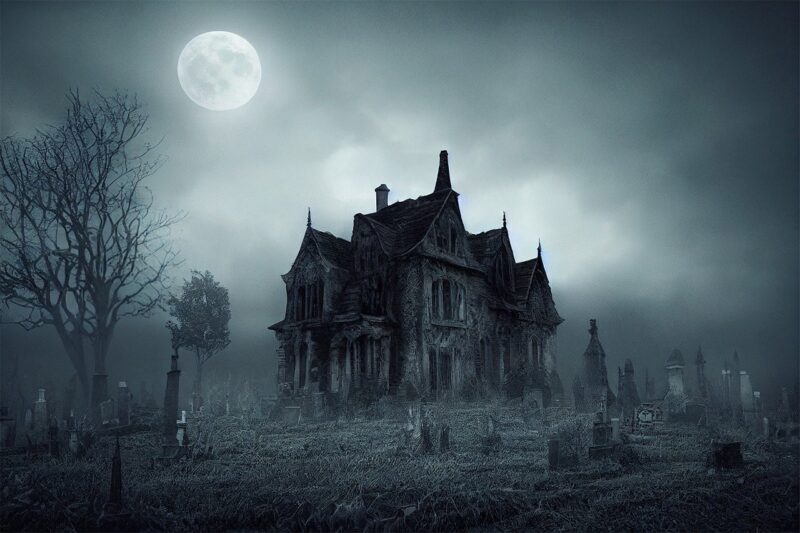Why the 1970s Were the Golden Age of Scary Movies That Still Terrify Us Today
November 16, 2024

The 1970s marked a transformative decade in cinema, particularly for the horror genre. Filmmakers revolutionized the way audiences experienced fear, leaving an indelible mark that still resonates in the terrifying films of today. With a mix of psychological depth, societal reflection, and groundbreaking storytelling, the horror movies of the 1970s set new standards that have influenced countless films since. Whether through chilling narratives or innovative cinematography, these cinematic creations laid the foundation for the horror genre as we know it now.
1. A Shift in Horror Aesthetics
The horror films of the 1970s introduced audiences to a new breed of tales that leaned heavily on realism and psychological terror. Gone were the days of distant monsters and supernatural beings; the new wave of horror was rooted in human fears and societal issues, making it all the more relatable and terrifying.
With movies like “The Exorcist” (1973), directed by William Friedkin, horror shifted to darker, more disturbing themes that focused on the battle between good and evil within a familiar setting. The film’s incorporation of religious elements and supernatural dread echoed the prevailing anxieties of society, especially regarding the loss of innocence and the questioning of faith.
2. The Influence of the Vietnam War
The Vietnam War loomed large over American society during the 1970s, shaping the cultural landscape and influencing various art forms, including cinema. This backdrop of conflict and chaos infiltrated horror films, as directors began addressing the psychological trauma inflicted by war.
Films such as “The Texas Chain Saw Massacre” (1974) captured the horror of everyday life and the breakdown of societal norms. With its visceral depiction of violence and madness, it resonated with a generation grappling with the aftermath of war and loss. The movie’s raw authenticity and disturbing imagery created a heightened sense of fear that mirrored the collective trauma of an entire nation.
3. Iconic Villains and Different Fears
During the 1970s, horror films also introduced some of the most iconic and terrifying villains in cinematic history.
Characters such as Norman Bates in “Psycho” (1960) cast a long shadow, but the 1970s saw the emergence of figures like Michael Myers from “Halloween” (1978) and the titular creature in “Jaws” (1975). These characters challenged the traditional notion of monsters, drawing terror from their human qualities or, in the case of the shark in “Jaws,” from an unrelenting force of nature.
Instead of relying solely on supernatural elements, these films explored psychological horror, making the audience confront their fears directly. The vicious serial killers and monsters on screen embodied the real dangers lurking in society, serving as harbingers of deep-seated anxieties about violence and vulnerability.
4. Groundbreaking Filmmaking Techniques
The 1970s also witnessed significant changes in filmmaking technology and storytelling techniques that elevated the horror genre.
Directors such as Roman Polanski and Brian De Palma used innovative camera angles and lighting techniques that enhanced the tension and fear in their films. “Rosemary’s Baby” (1968), while technically released just before the 1970s, set a precedent for psychological horror, brilliantly using suspense to build dread without relying heavily on jump scares or graphic violence. The decade further embraced this ethos, as filmmakers began experimenting with sound and editing to evoke emotions and create anxiety.
The handheld camera work seen in “The Texas Chain Saw Massacre” cultivated an immersive experience, making viewers feel as if they were participants in the harrowing events. The iconic score of horror films, especially John Carpenter’s haunting music in “Halloween,” became integral to the genre, adding layers of unease and anticipation.
5. Exploring Social Issues
The best horror films of the 1970s did more than conjure fear; they also captured the zeitgeist, reflecting pressing social issues. Movies like “Get Out” (2017) represent the continued evolution of horror but are rooted in the political and social commentary that began in the 70s.
For example, “Night of the Living Dead” (1968) explored racial tensions and the implications of societal breakdown, paving the way for future films to tackle pressing issues such as feminism, consumerism, and environmentalism. In the 70s, films like “The Women’s Liberation Movement” reflected new ideas about gender roles, becoming part of the horror genre as women like Ellen Ripley in “Alien” (1979) emerged as strong characters in previously male-dominated narratives.
The genre became a platform for challenging cultural norms and addressing societal fears, proving that horror could be a vehicle for social commentary.
6. Lasting Legacy: Horror Today
The impact of 1970s horror is evident in countless films that followed, as filmmakers continue to draw inspiration from this golden age. The nuanced storytelling, strong character development, and exploration of real-world fears have become hallmarks for modern horror. Films like “Hereditary” (2018) and “Get Out” (2017) echo the psychological complexity and societal themes found in their 1970s predecessors.
Moreover, the trend of reviving classic horror tropes and reimagining iconic characters emphasizes the enduring popularity of this era. As directors pay homage to the work of the past, they also challenge contemporary fears, proving that the foundations laid in the 1970s remain relevant.
Conclusion
The 1970s truly were the golden age of scary movies, crafting a legacy that still terrifies and enthralls us today. The decade’s innovative storytelling, complex characters, and societal relevance shaped the evolution of the horror genre, creating an unforgettable impact on filmmakers and audiences alike. As viewers continue to be drawn to the dark corners of human fear, the horror of the 1970s remains an integral part of cinematic history, a testament to its ability to reflect our deepest anxieties and fears. By examining these films today, we not only revisit classics but also unearth the timelessness of fear that echoes through generations.
In a world where new horrors emerge daily, perhaps it’s these very films from the unsettling 1970s that remind us of our humanity, our fragility, and the complex nature of fear that continues to haunt us.







